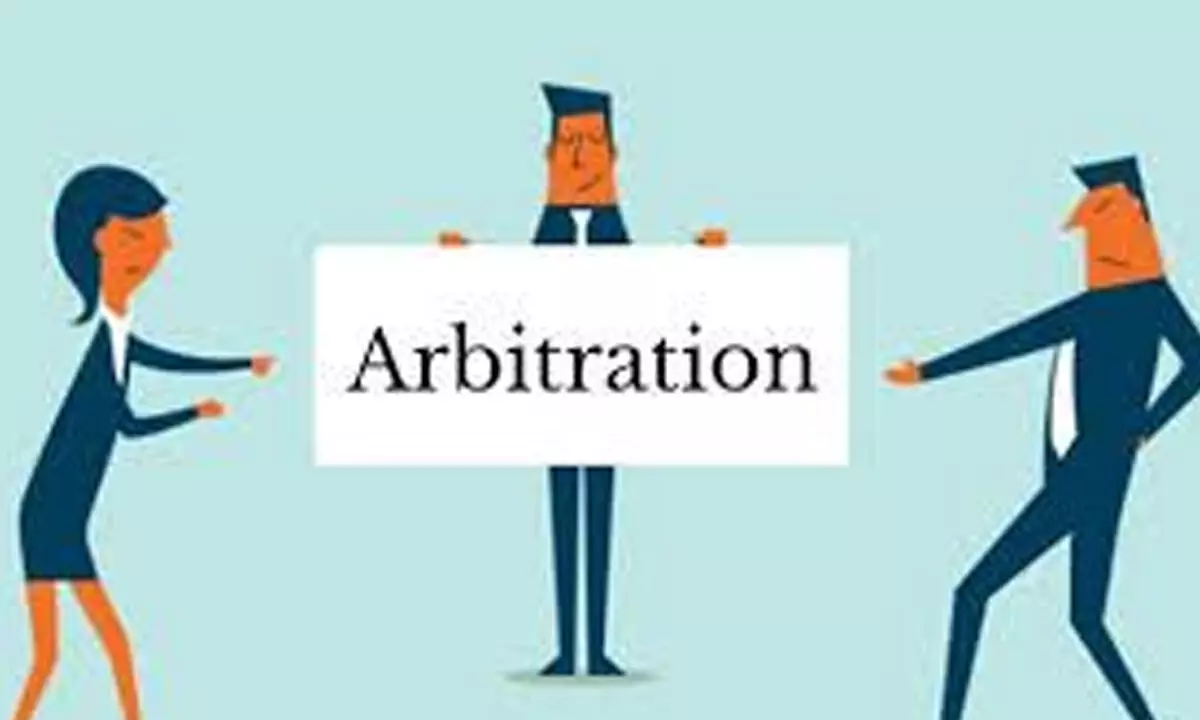Arbitration sans court intervention

Arbitration, or an Alternative dispute resolution (ADR) method, does not require court involvement in arbitrator selection or award issuance
Arbitration, or an Alternative dispute resolution (ADR) method, does not require court involvement in arbitrator selection or award issuance. The pace of judicial administration in India and legislative support for ADR must be examined to understand this assertion.
We have thoughts, observations, and impressions about Indian justice delivery and processes. “Justice in India is extremely expensive” “Justice is only possible for the wealthy.” “In India, justice is always delayed, and we only receive it after we die.” Daily headlines often give us the notion that “Courts and attorneys are inaccessible to all.”
Despite irritation causing scepticism and strong sentiments, these are not unwarranted. The National Judicial Data Grid reports about 4.47 lakh cases waiting in courts from the highest to the lowest institutional level. Ironically, 85% of these cases are in district courts. Over six lakhs of these cases have been languishing for over twenty years, and ninety-five thousand for over thirty. 1.10 million civil lawsuits and 3.33 million criminal cases are pending. They must be great for a reason.
The table illustrates three points. One: Indian courts have an alarming volume of cases. Two-criminal cases are three times more numerous than civil cases. Three, Indian crime has skyrocketed in recent decades. Criminal cases added in one year exceed civil cases added over thirty years.
This has plagued the Indian Justice Administration for years. To speed up justice delivery and enhance access, the country must reduce crime and courts’ workload. Policymakers considered alternate justice delivery methods or alternate Dispute Resolution Mechanisms.
The 1996 Arbitration & Conciliation Act and Process
The Arbitration and Conciliation Act, 1996 is a major ADR statute in free India. It has some roots in the 1940 Arbitration Act. From 2015 through 2021, the 1996 statute was amended to make arbitration available to anybody who desired to resolve disputes outside of court. Arbitration aims to give arbitrators’ rulings with the same weight as a court’s judgement. Section 7 of the Arbitration and Conciliation Act, 1996 (the Act) requires parties to freely agree to arbitrate. Both disputing parties should go to an Arbitration Institution to find a mutually agreed arbitrator. Arbitrators hear cases like courts do and make awards. A conventional court case where only one aggrieved party goes to court and the court summons, collects evidence, hears, and passes the judgement which does not require mutual consent. Sometimes the other party is unaware that a court will summon it for any act that requires judicial action to resolve the disagreement. The difference between mediation and arbitration is minimal. In mediation, disputing parties choose a mediator/mediation institution, consult them, and resolve the conflict on their own with the mediators’ expert advice, while in arbitration, parties give the arbitrator decision-making power with mutual consent. Then the Arbitrator passes an award that is enforceable legally.
Court intervention.
Arbitral procedures are never interrupted by courts. Arbitrators need not be court-appointed. The parties are free to agree on a procedure for appointing the arbitrator or arbitrators, but if they fail to do so, the court will appoint an arbitrator, according to Section 6(2) of the Act. Section 5 of the Act confirms that no judicial authority shall interfere except as authorized in this Part in matters controlled by this Part. The courts can intervene four more times at the parties’ request. One to refer parties to arbitration under Section 8 of the Act if there is an arbitration agreement. Two- to Grant interim measures under section 9 of the Act if requested by the parties. Three, under Section 11, if the parties cannot agree on a tribunal appointment method or cooperate in making appointments. The fourth intervention is to set aside the Award under Section 34 of the Act at the parties’ request if the Arbitrator did not follow the procedure, there is no agreement, the arbitrator was unilateral, the parties were incompetent, or a conflict of interest existed. Otherwise, courts have no role in appointing arbitral tribunals or passing awards.
Challenges
Ignorance about arbitration as a non-court conflict resolution method is a big issue. Even 27 years after Arbitration statute was passed in 1996, many advocates are unaware that arbitration can be done without judicial involvement. The Indian government revised the Act in 2021 and established the Arbitration Council of India (ACI) to regulate institutional arbitration, although ACI has not yet been operationalized. Required advocacy initiatives have not been run to reach more people. Private arbitration firms are targeting high-end and multinational clients. Some state governments have signed an MoU with private Arbitration Institutions (Ais) to allocate all their cases, which violates the basic principle of arbitration, which requires mutual consent through an arbitration agreement. Using an arbiter without other disputant’s consent is illegal. Arbitration institutions must be notified immediately pending ACI development to govern arbitration justice. Thus, courts can focus on serious criminal cases and reduce case backlog.
















